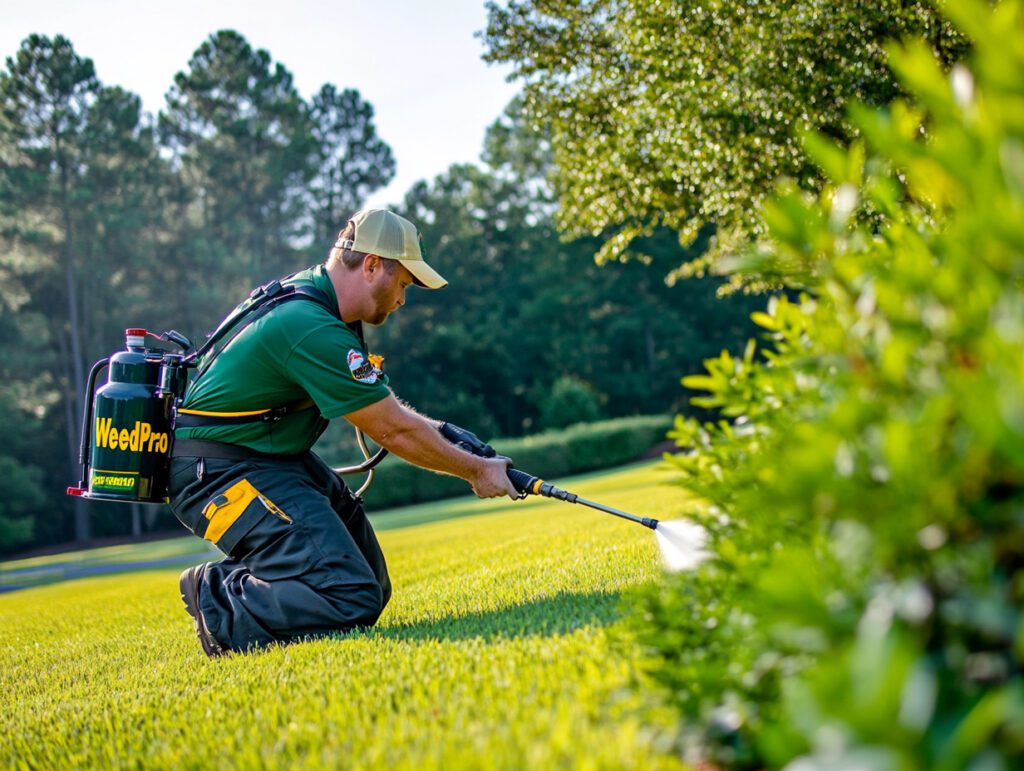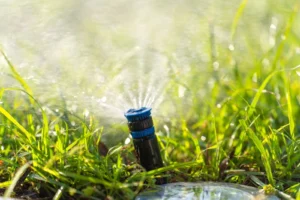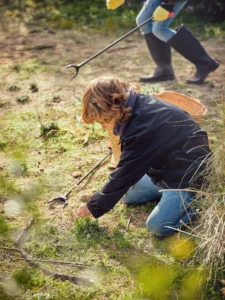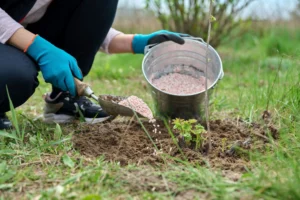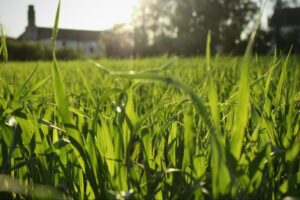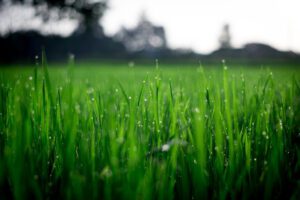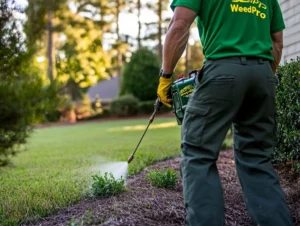To create a flourishing Roswell lawn, you need to do more than mow it regularly: you need to be smart with pest management, using the treatments that target the weeds, insects, and soil conditions in your area. This resource will cover the most common pest and weed threats in Roswell, GA, including how pre-emergent and post-emergent treatments work, and how to effectively manage fire ant and mosquito populations. Additionally, it will explore a more sustainable approach through professional lawn care programs.
Roswell’s Most Common Lawn Pests and Weeds: What You Need to Know
Pests and weeds are an ongoing nuisance as they fight with your turf for highly sought-after nutrients, destroy roots and blades, and decrease the density and color of your lawn. Correct identification can help you select the most efficient pesticide application methods and maintain a healthy Roswell lawn while preventing issues that might result in expensive repairs. Let’s delve into common weeds, bugs, and the relationship between grass types and invasions.
Weeds That Threaten Roswell Lawns
As Roswell homeowners, it is easy to fight off two main groups of weeds that consume healthy grass and gobble up precious resources.
- Broadleaf weeds, Such as Dandelions, clover, and henbit, are characterized by their extensive leaves and taproot systems that aggressively consume moisture/nutrients from the soil.
- Grassy weeds, such as crabgrass, nutsedge, and goosegrass, emerge from multiple origins in the ground and can appear very quickly, especially where there is thin/thinned-out turf.
Taking action against these threats early allows for a consistent carpet of grass, potentially reducing the need for herbicides.
Common Lawn Pests Causing Damage in Roswell
If grass alone can be compromised, insects can impact the health of your lawn by feeding on grass roots or the grass itself.
- Fire ants make unsightly mounds that can affect attempts to mow, as well as sting rather painfully.
- Mosquitos reproduce in standing water, pose numerous health problems, and detract from the enjoyment of your outdoor space.
- Grubs feed on grass roots, resulting in visible blight or wilting brown patches in the turf.
- Ticks and fleas may hitch a ride on humans and pets that enter the area, potentially leading to further health problems.
Consistent monitoring for insect activity is crucial to enable the use of an appropriate insecticide that minimizes harm to your turf.
How Local Grass Types Influence Pest and Weed Issues
The different types of turfgrass common in Roswell possess varying degrees of density, shade tolerance, and natural pest resistance, all of which can influence the types of treatments needed.
| Grass Type | Growth Characteristic | Common Vulnerability |
| Zoysia | Dense, slow-spreading | More susceptible to mole activity |
| Bermuda | Aggressively spreads via stolons | Often targeted by grubs |
| Tall Fescue | Forms clumps, tolerates shade well | Prone to broadleaf weed invasion |
| Centipede | Slow-growing, low-maintenance | Its thinner canopy can attract pests |
| St. Augustine | Thick growth, thrives in shade | Fungal stress can lead to insect problems |
Matching your pesticide application timing and active ingredients to your specific grass type will maximize effectiveness and minimize any potential harm to your lawn.
Pre-Emergent and Post-Emergent Pesticides: Your Roswell Lawn’s Defense System
To create a strong two-part defense for your lawn, use pre-emergent herbicides and post-emergent herbicides together. Pre-emergent herbicides prevent existing weed seeds in the soil from germinating. Post-emergent herbicides act to eliminate weeds that have already sprouted. This process preserves the integrity of your turf, allowing it to compete less with weeds for water and nutrients. Let’s discuss when to apply, how it works, and eco-product alternatives.
Pre-Emergent Weed Control: When to Apply in Roswell
Pre-emergent herbicides work by creating a protective barrier within the soil that prevents weed seeds from germinating. This type of treatment is most effective on crabgrass. Ideally, for lawns in Roswell, timing should be late winter (February–March) or early fall (September), when soil temperatures are around 55°F, to begin application of pre-emergent to combat cool-season weeds.
- When using a spreader, ensure it is calibrated correctly to apply an even coating of pre-emergent herbicide across your entire lawn.
- You should lightly water the lawn after applying and painting the barrier.
- You should also refrain from core aeration due to the timing both before and immediately following application.
After establishing a regular schedule and timing the application of pre-emergent herbicides before weed germination, you should end up needing fewer herbicides towards the end of the season.
How Post-Emergent Treatments Eliminate Existing Weeds
Post-emergent herbicides are designed to target weeds that are actively growing. They work by being absorbed through the foliage and translocated down to the roots, effectively killing the weed from the top down. Selective formulations are available that can differentiate between broadleaf and grassy weed species:
| Herbicide | Target Weed Type | Optimal Application Window |
| 2,4-D blend | Broadleaf weeds | Apply from spring through fall when weeds are actively growing |
| Quinclorac | Crabgrass and goosegrass | Best applied during the early summer bolting stage |
| Glyphosate (spot-treat) | Stubborn perennial weeds | Can be used at any growth stage; avoid contact with desirable turf |
Using spot treatments helps minimize the overall exposure of your lawn to herbicides and concentrates control efforts precisely where they are needed most.
Effective Fire Ant and Mosquito Control Strategies for Roswell Lawns
Keeping fire ants and mosquitoes at bay is not only important for your enjoyment of your property, but also reduces the risk of health effects, while enhancing efforts to manage your overall turf protection and eliminate these populations. Integrated pest management strategies reduce fire ant colonies and mosquito breeding grounds, ensuring family and pet safety.
Top Fire Ant Extermination Methods for Roswell Lawns
Successfully managing fire ant mounds means using baits and drenches that affect the colony structure and reproductive cycle:
- Grain baits with hydramethylnon should be distributed evenly across turf in the spring and again in early fall.
- Mound drenches containing abamectin poured directly into active mounds will kill the mound.
- Retreat every 60-90 days, seasonally, to manage new colonies.
The combination of these treatments is crucial for disrupting the fire ant life cycle and facilitating long-term population management.
How Mosquito Treatment Enhances Lawn Safety and Comfort
Mosquito control methods aim to reduce adult mosquitoes and interrupt their breeding cycle. Mosquitoes can make your yard even less enjoyable, but controlling their populations can make your yard safer for adults and children.
- Barrier sprays are created with either commonly known pyrethroid or botanical oils that coat the plant foliage to kill adult mosquitoes.
- Larvicidal for water features to ensure mosquito larvae are eliminated before they become adult.
- Regularly monitor potential mosquito breeding sites, such as standing water.
Dual methods aim to manage pest populations, resulting in fewer mosquito bites and reduced risks of borne diseases. After implementing bee-safe practices, homeowners tend to use their property more.
Long-Term Fire Ant and Mosquito Prevention in Roswell
Sustainable strategies include both cultural practices and targeted chemical applications to protect your property year-round.
- Baiting programs reliably timed before peak activity in the colony aid in prompt performance.
- Water management should be adequate after rain or irrigation, and standing areas on the property should have proper drainage.
- Using biological control, beneficial nematodes for grub control is noted to have limited larval activity for mosquito breeding and are a potential food source for ants.
- For long-term management, insect monitoring should be conducted year-round with spot control rather than blanket applications.
A planned approach that couples seasonal monitoring of pest populations with targeted treatment during the active life cycle of the pest is best for continuous control while limiting product use throughout the year.
Choose Smart, Not Stronger
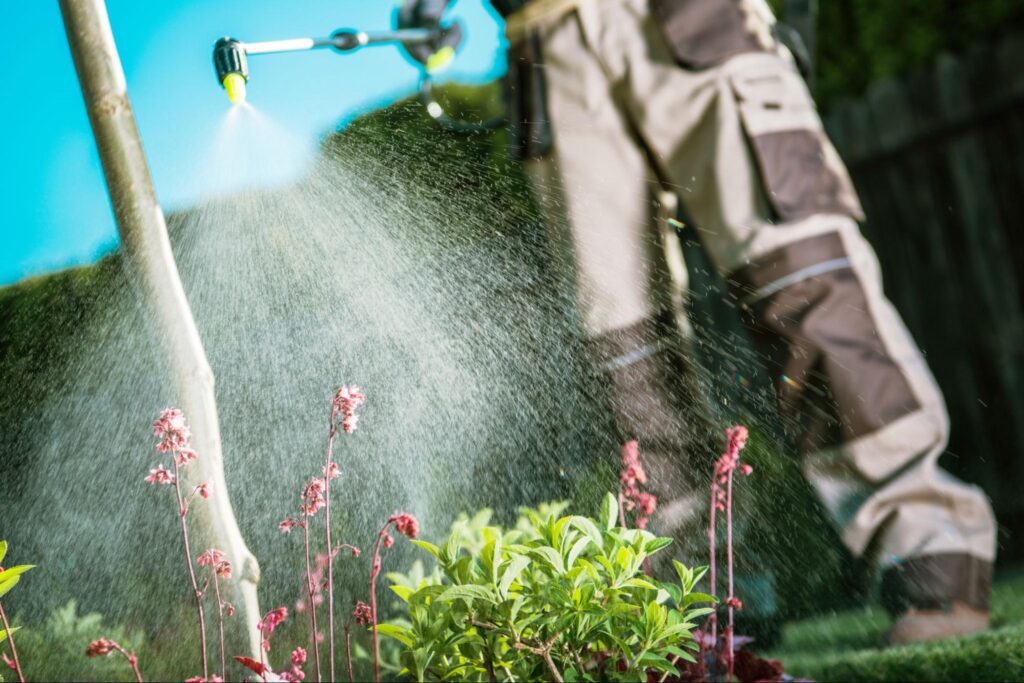
In times of high pest activity, weeds or insects need to be targeted, not smoke-em-out methods. For weed management, Weed Pro recommends targeted treatments based on smart approaches to control pest populations while minimizing non-target approaches.
[Let’s build your custom weed-and-pest watch strategy today
FAQ
Do multi-purpose products work well for both weeds and pests?
They might sound efficient, but mixing job types often results in shallow effectiveness. Spot-targeting usually yields better results.
Can you treat it after it rains?
Avoid it—wet blades and soil can wash away products. Instead, treat it in the early mornings when dry conditions are ideal.
Are synthetic weed-and-pest products safe for pets?
Most modern products are formulated to be safe when used correctly and allowed to dry. Always keep pets off during application and adhere to label instructions.
Up Next: Fix Your Soil, Fix Your Lawn
Sooner or later, healthy soil is what stands between you and long-term turf success. Next: “Unlock a Lush Lawn in Roswell, GA: Mastering Soil Health for Peak Growth.”

